Choosing between a hot runner and a cold runner system is one of the most critical decisions you’ll make in injection molding. Pick the wrong one, and you could be stuck with high material waste, slow production cycles, and a part cost that eats into your profit margins. Getting this right from the start is fundamental to a successful project.
Neither system is universally better; the best choice depends on your project’s specific needs. Hot runner systems are ideal for high-volume production, as they eliminate waste and offer faster cycle times, lowering the cost per part. Cold runner systems are better for lower initial mold costs, simpler maintenance, and projects using a wide variety of materials or frequent color changes.
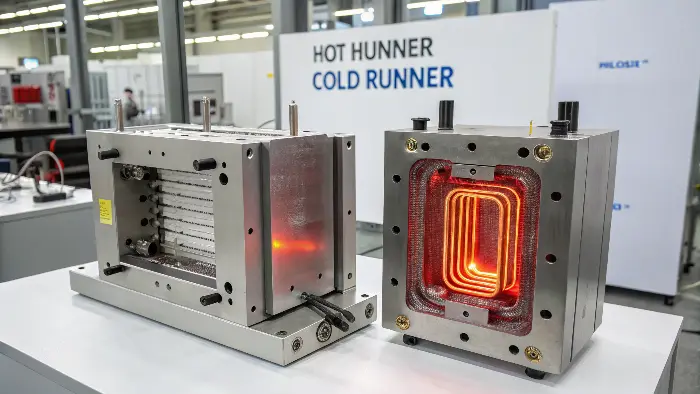
In my years running CavityMold, this is one of the first conversations I have with project managers like Alex. The decision impacts everything from the upfront tool cost to the final price of each piece that comes out of the machine. It’s not just a technical detail; it’s a core part of the project’s business case. Let’s break down the key differences so you can make an informed choice.
Which is better hot runner system or cold runner system?
You’re trying to decide on a mold design, and the question "which is better?" seems like the logical place to start. But this simple question is a trap. Answering it without context can lead you down a path that’s completely wrong for your budget, production volume, and material, causing major headaches later on.
Neither system is inherently "better." A hot runner system is better for high-volume, long-term production where reducing part cost and cycle time is critical. A cold runner system is better for projects with lower production volumes, tight upfront budgets, or those that require frequent material or color changes. The "better" system is the one that best aligns with your project’s financial and production goals.
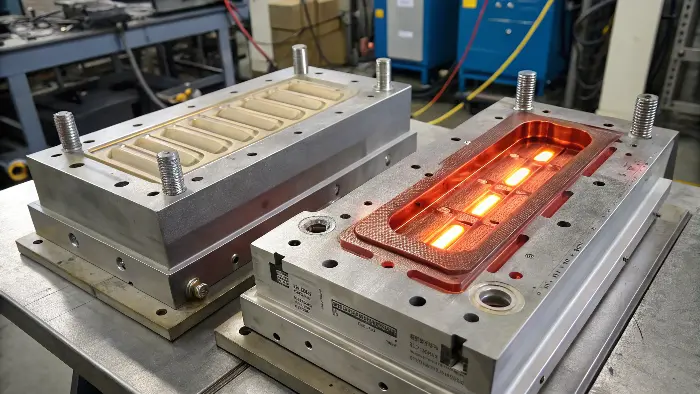
The core difference is simple. In a cold runner mold, the channel that guides the plastic from the machine nozzle to the part cavity—the runner—is cooled and ejected with the part in every cycle. It’s waste material that needs to be recycled or thrown away. In a hot runner mold, the runner is kept hot inside the mold, so the plastic stays molten and is never ejected. It’s a "mold within a mold." This single difference creates a cascade of trade-offs.
The Core Trade-Off: Upfront Cost vs. Long-Term Savings
The decision almost always boils down to a financial calculation. A cold runner mold is simpler and therefore much cheaper to build. A hot runner system is a complex piece of machinery with its own heaters, sensors, and controllers, which adds significantly to the initial tool cost. However, over a long production run, the hot runner mold saves money on every single part produced. It eliminates material waste and runs faster, increasing output.
Here’s a direct comparison of the key factors:
| Feature | Hot Runner System | Cold Runner System |
|---|---|---|
| Initial Mold Cost | High | Low |
| Cost Per Part | Lower (no waste, faster cycle) | Higher (material waste, slower cycle) |
| Cycle Time | Faster | Slower |
| Material Waste | Virtually None | Yes (Sprue and Runner) |
| Material Flexibility | Good, but sensitive to some resins | Excellent |
| Maintenance | More Complex & Costly | Simpler & Cheaper |
For a project manager like Alex, the breakeven point is key. We can help calculate how many parts you need to produce before the savings from a hot runner system outweigh its higher initial cost.
What are the advantages of hot runner mold?
You’ve heard that hot runner systems are the premium choice, but you need to build a solid business case to justify the higher investment. Without understanding the specific, tangible benefits, it’s just an expensive option. Knowing the advantages helps you prove its value and secure the budget for a more efficient production process.
The primary advantages of a hot runner mold are the complete elimination of runner scrap, leading to significant material savings, and faster production cycles. This results in a lower cost per part. Additionally, hot runners offer improved part quality and consistency, along with greater design freedom for placing gates in the most optimal locations.
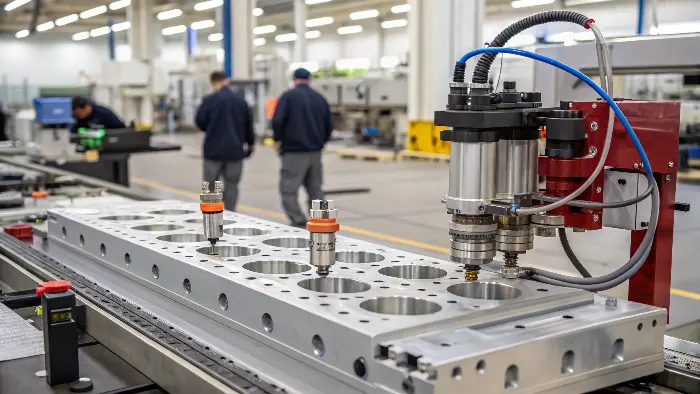
When a client is on the fence, I focus on three major benefits that directly impact their bottom line and product quality. These aren’t just minor improvements; they can fundamentally change the economics of a project.
Advantage 1: Zero Material Waste
This is the most obvious benefit. With a cold runner, the runner itself is scrap. You pay for that plastic, and then you either pay to have it reground or you throw it away. For expensive engineering-grade plastics, this cost adds up incredibly fast. I’ve worked on projects where the cold runner weighed more than the tiny part it was feeding. In those cases, more than 50% of the material per shot was waste. A hot runner eliminates this completely, which means every gram of plastic you buy ends up in a sellable product.
Advantage 2: Faster Production Cycles
In a cold runner mold, the runner is often the thickest part of the shot, so it takes the longest to cool. The entire cycle time is dictated by how long it takes for that runner to solidify. Since a hot runner system doesn’t have to cool a runner, the cycle time is determined only by the part itself. Shaving even a few seconds off each cycle can mean thousands of extra parts per week, dramatically increasing your production capacity and lowering the machine time cost allocated to each part.
Advantage 3: Better Quality and Design Freedom
Hot runner systems provide much better control over the melt flow and pressure right up to the part. This leads to more consistent filling, reduced internal stress in the part, and fewer cosmetic defects like sink marks. It also allows us, as mold makers, to place gates in locations that would be impossible with a cold runner. This means we can gate directly onto the best spot for a balanced fill, improving the part’s structural integrity and appearance.
What are the disadvantages of hot runner Mould?
Hot runner systems can sound like the perfect solution, but you know there’s no such thing as a free lunch. Ignoring the potential downsides can lead to unexpected costs, complex maintenance issues, and crippling downtime if something goes wrong. Understanding the risks is just as important as knowing the benefits for making a smart decision.
The main disadvantages of a hot runner mold are its significantly higher initial purchase price and its increased complexity. Maintenance and troubleshooting are more difficult and require specialized technicians. These systems are also less suitable for materials that are very heat-sensitive or for projects that involve frequent color changes, which can be slow and wasteful.
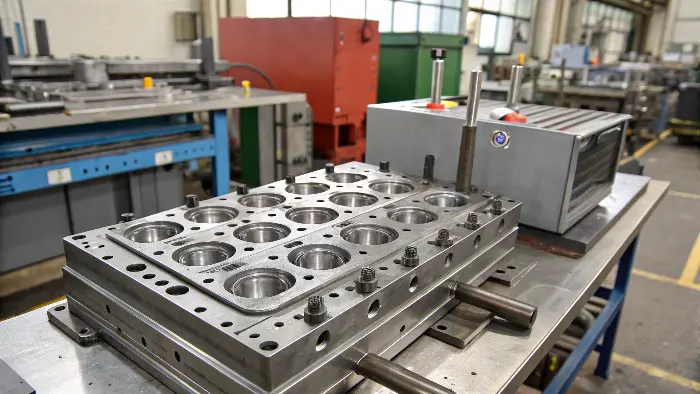
While I’m a big fan of hot runners for the right application, I always make sure my clients are aware of the challenges. It’s my job to give them the full picture so there are no surprises down the road.
Disadvantage 1: High Initial Investment
This is the biggest hurdle. A hot runner system is a precision-engineered product that can add anywhere from 30% to over 100% to the cost of the mold. For a startup or a project with a limited production run of, say, 50,000 parts, it can be impossible to justify this upfront expense. The return on investment simply isn’t there, making a simpler cold runner mold the only logical financial choice.
Disadvantage 2: Complexity and Maintenance
A hot runner mold is far more complex than its cold runner counterpart. It has heating elements, thermocouples, and intricate channels that can get clogged or fail. When a gate gets blocked or a heater burns out, the mold has to be taken out of the press and disassembled by a skilled technician. This means more potential for downtime and higher maintenance costs over the life of the tool. A cold runner is simple: if a gate is blocked, it’s usually easy to access and clear.
Disadvantage 3: Lack of Flexibility
Hot runner systems are less flexible in a few key areas. First, color changes are a major pain. It takes a long time and a lot of purging material to get every last trace of the old color out of the internal manifold. If your project requires you to switch from black to white frequently, a hot runner can be a nightmare. They are also less forgiving with certain materials, like PVC, which can degrade from being held at a high temperature for too long in the manifold.
What is the preferred runner shape?
You’ve decided on a cold runner system, but now you have to think about the design of the runner itself. You might assume any channel will do, but the shape of that runner has a direct impact on part quality, material usage, and processing efficiency. Choosing a poor shape can lead to filling problems and unnecessary waste.
For a cold runner system, the full-round runner is the most efficient and technically preferred shape. It provides the lowest resistance to flow and minimizes heat loss. However, because it must be cut into both halves of the mold, the trapezoidal runner is a very common and practical alternative that offers excellent performance while being easier to manufacture.
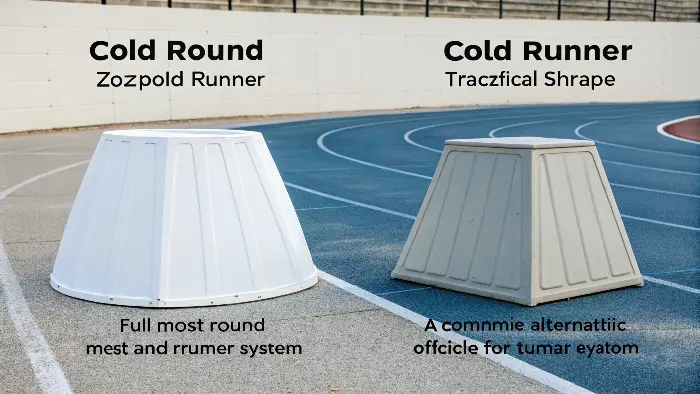
This is a detail that often gets overlooked, but it’s critical for an efficient process. The goal of the runner is to transport the molten plastic to the cavity with the minimum possible pressure drop and heat loss. The shape of the runner is key to achieving this.
Comparing Runner Cross-Sections
The efficiency of a runner is all about its volume-to-surface-area ratio. A shape with a lot of surface area for its size will cool down the plastic faster, forcing the injection molding machine to work harder and push with more pressure. This can introduce stress into the part.
Here’s how the common shapes compare:
| Runner Shape | Pros | Cons | Machining |
|---|---|---|---|
| Full-Round | Best performance. Lowest pressure drop and heat loss. | Most expensive to machine. | Requires precise matching cuts in both mold halves (A and B plates). |
| Trapezoidal | Excellent compromise. Good flow efficiency, close to full-round. | Slightly less efficient than full-round. | Can be machined easily in one mold half. |
| Half-Round | Cheapest and easiest to machine. | Poor performance. High surface area leads to fast cooling and high pressure drop. | Machined very easily in one mold half. |
In our shop, we almost always push for a trapezoidal or full-round runner. While a half-round runner is technically the cheapest to cut into the steel, the money saved is quickly lost due to processing problems, higher scrap rates, and lower part quality. It’s a classic example of a decision that looks good on the initial invoice but costs you more in the long run.
Conclusion
The choice between a hot runner and a cold runner isn’t about which is better, but which is right for you. It’s a strategic decision balancing upfront investment against long-term savings. Hot runners offer efficiency for high volumes, while cold runners provide simplicity and lower initial cost. By analyzing your project’s volume, material, and budget, you can make the smart choice.
